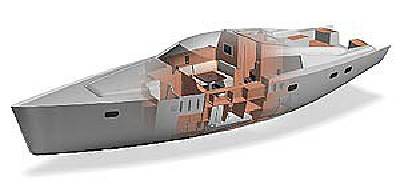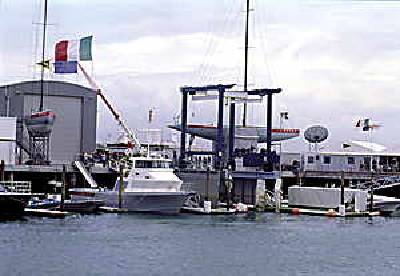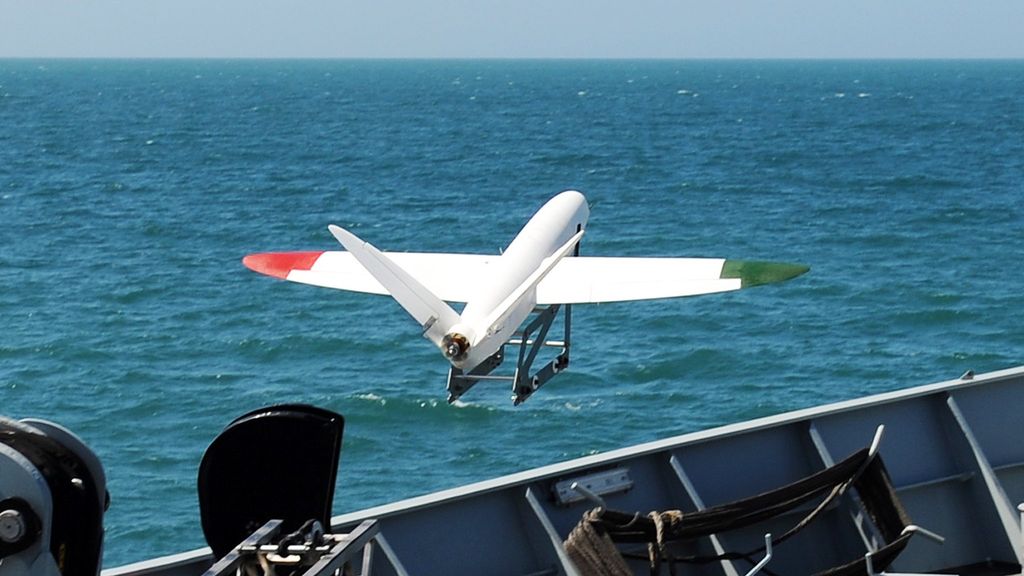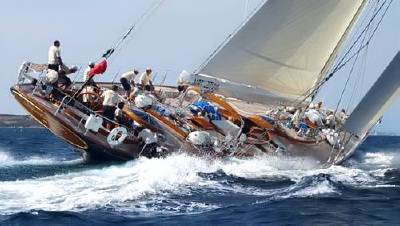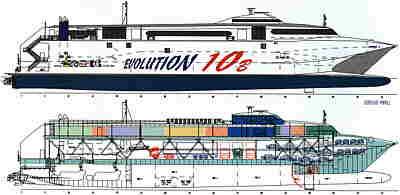Sailboat buyers want delivery as soon as possible and customization is the wave of the future. Wauquiez International is responding by doing more development work digitally.
Henri Wauquiez built his first sailing yacht in 1965, the opening chapter in an ongoing story of a passion for sailing and high-quality boats. Wauquiez sailing yachts are famous around the world as comfortable, fast and reliable boats. Earlier models such as the Elisabethan 29 and Prétorien are still highly sought after. Current models include the Centurion and Pilot Saloon. Although it is based in France, more than 85 percent of Wauquiez International’s revenue comes from outside the country, as sailors around the world realize the quality of these boats. Wauquiez International is a subsidiary of Group Bénéteau, a world leader in sailboat production.
In recent years Wauquiez has faced increasing competition, which has put pressure on the company to control development costs. Time-to-market is another concern. Purchasers of these high-end sail boats don’t like to be kept waiting. After evaluating its development process, management realized that by moving more of the work into the digital realm, they could speed the time required to bring a new boat model to market and eliminate some costs. In 2002, the company made the decision to work in 3D using Solid Edge. Not only would this help address their time-to-market and cost concerns. Solid Edge would also provide a digital platform that would eventually permit Wauquiez to tailor boat interiors to specific customer requests.
How a sail boat concept becomes reality
The hull and deck shapes for a new Wauquiez boat are created by an outside architect. Designers at Wauquiez then work within those shapes to lay out the boat’s interior. They must arrange components such as the engine and other machinery, water and fuel tanks, plumbing, and interior furnishings and carpentry as efficiently and attractively as possible within the limited space. In the past, when the design team worked in 2D, the only way they could really visualize and fine-tune the interior layout was to build a full-size mockup of each new model and physically arrange the interior components. Building a mockup delayed production by two months and added significant costs.
Now designers import the architect’s model in IGES format into Solid Edge. They create 3D solid models of interior components (or pull existing models from the Solid Edge component library) and place them within the digital outlines of the hull and deck. “With Solid Edge, I particularly appreciate the accuracy of working this way, and the ease of making modifications,” says Cédric Chorlay, design manager at Wauquiez International. Using Solid Edge’s assembly model capabilities, the company now creates a digital mockup of the entire boat, eliminating the need for physical prototypes. With the digital mockup, they can optimize the interior configuration just as they did before using the physical model, but without the cost. “This alone has enabled us to cut two months off the development cycle,” Chorlay adds. Images of the Solid Edge virtual mockup are used in sales and marketing materials to help sell new boats.
More Solid Edge advantages
“Solid Edge has improved the communication between the different groups responsible for the development of a boat,” says Chorlay. “The result is a more coherent development process and greater accuracy in the final product.”
The two-month time savings is important because it helps get boats to the buyers sooner. But Wauquiez is experiencing other benefits from its use of Solid Edge as well. “Solid Edge has improved the communication between the different groups responsible for the development of a boat,” says Chorlay. “The result is a more coherent development process and greater accuracy in the final product.” For example, Wauquiez now sends 3D Solid Edge files to the subcontractor who manufactures the interior wooden components. The wood used in these boats is expensive and represents a large part of a boat’s cost. Using the Solid Edge files as the basis for CNC cutting paths helps ensure the accuracy of the cutting process and reduces waste.
With Solid Edge as its 3D development platform, Wauquiez is poised to take even greater advantage of digital product development. “We will evolve in the future to where we have a completely digital process,” says Chorlay. Ultimately Wauquiez will be able to design a boat interior in Solid Edge to a customer’s unique specifications. They will download the Solid Edge layout to CNC machinery in their own shop and produce a customized boat. Because all this can happen so much faster in Solid Edge, it will become possible to design custom boats in an acceptable time frame. This is the wave of the future, and Wauquiez is poised to ride it with the help of Solid Edge.

